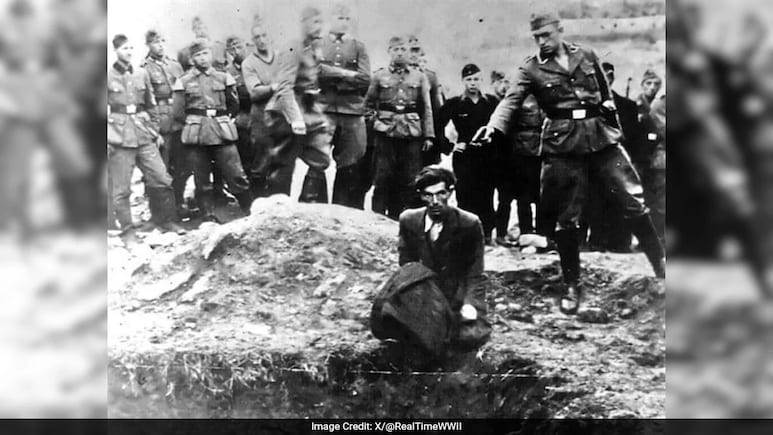
- Jurgen Matthaus used AI to identify the soldier in The Last Jew in Vinnitsa photo
- The soldier is Jakobus Onnen, a member of Einsatzgruppe C in 1941 Soviet Union
- The massacre occurred on July 28, 1941, likely in Berdychiv, not Vinnytsia as thought
A historian may have solved the mystery of the Nazi man's identity in one of the Holocaust's most haunting images, depicting a German soldier aiming a pistol at a kneeling man in a suit, surrounded by troops and a pit of bodies. US-based German historian Jurgen Matthaus claims to have used artificial intelligence (AI) to identify the soldier in the photograph known as The Last Jew in Vinnitsa.
Matthaus' research, published in Zeitschrift fur Geschichtswissenschaft (Journal of Historical Studies), identifies the SS (Schutzstaffel) soldier as Jakobus Onnen, a member of Einsatzgruppe C, a mobile killing unit operating in the Soviet Union in 1941.
"The match, from everything I hear from the technical experts, is unusually high in terms of the percentage the algorithm throws out there," Matthaus was quoted as saying by The Guardian, adding that Onnen, a French, English and gym teacher, was born in 1906 in the German village of Tichelwarf, near the Dutch border.
Using traditional archival research, input from peers, and volunteers from the open-source journalism group Bellingcat, Matthaus managed to reveal the date, location and unit involved in the mass shooting. As per him, the massacre took place on July 28, 1941, most likely in the early afternoon, in the citadel of Berdychiv. For a long time, Vinnytsia was falsely considered the site of the killings.
However, Matthaus' big breakthrough came when a reader, prompted by media coverage of his preliminary findings, suggested Onnen, their wife's uncle, as the gunman.
While most of Onnen's letters from the Eastern Front were destroyed, the family still had his pictures, which were analysed using AI. The results yielded a strong but not definitive match due to the historical photo's limitations.
"The AI experts tell me that this being a historical photo makes it more difficult to arrive at a 98 or 99.9 per cent [match]" as often yielded in contemporary forensic work, Matthaus said.
Also Read | Russian Woman Lists Indian Office Habits Considered 'Abnormal' Abroad
Onnen's identification
Circumstantial evidence, including Onnen's Nazi Party membership before Adolf Hitler took power in 1933 and his presence in Einsatzgruppe C, bolstered the identification. Onnen was never promoted beyond a relatively lowly rank and was killed in battle in August 1943.
Matthaus suggested that Onnen was posing in the photo to impress. "Motivation is one of the most difficult questions to answer. The reason I think why he is posing there, the way he depicts himself - I think is meant to impress," said Matthaus.
"Participating in a killing like that was taken for granted and didn't give you any kind of bonus points in these murder units."
Having identified the killer, Matthaus is now working with Ukrainian historian Andrii Mahaletskyi to identify the victim, using AI and Soviet-era records, though the task remains daunting.
Most of the million-plus victims in the occupied Soviet Union remain nameless, as their killers intended. This image, Matthaus argues, rivals Auschwitz's gate in revealing the Holocaust's brutal reality.
Track Latest News Live on NDTV.com and get news updates from India and around the world

